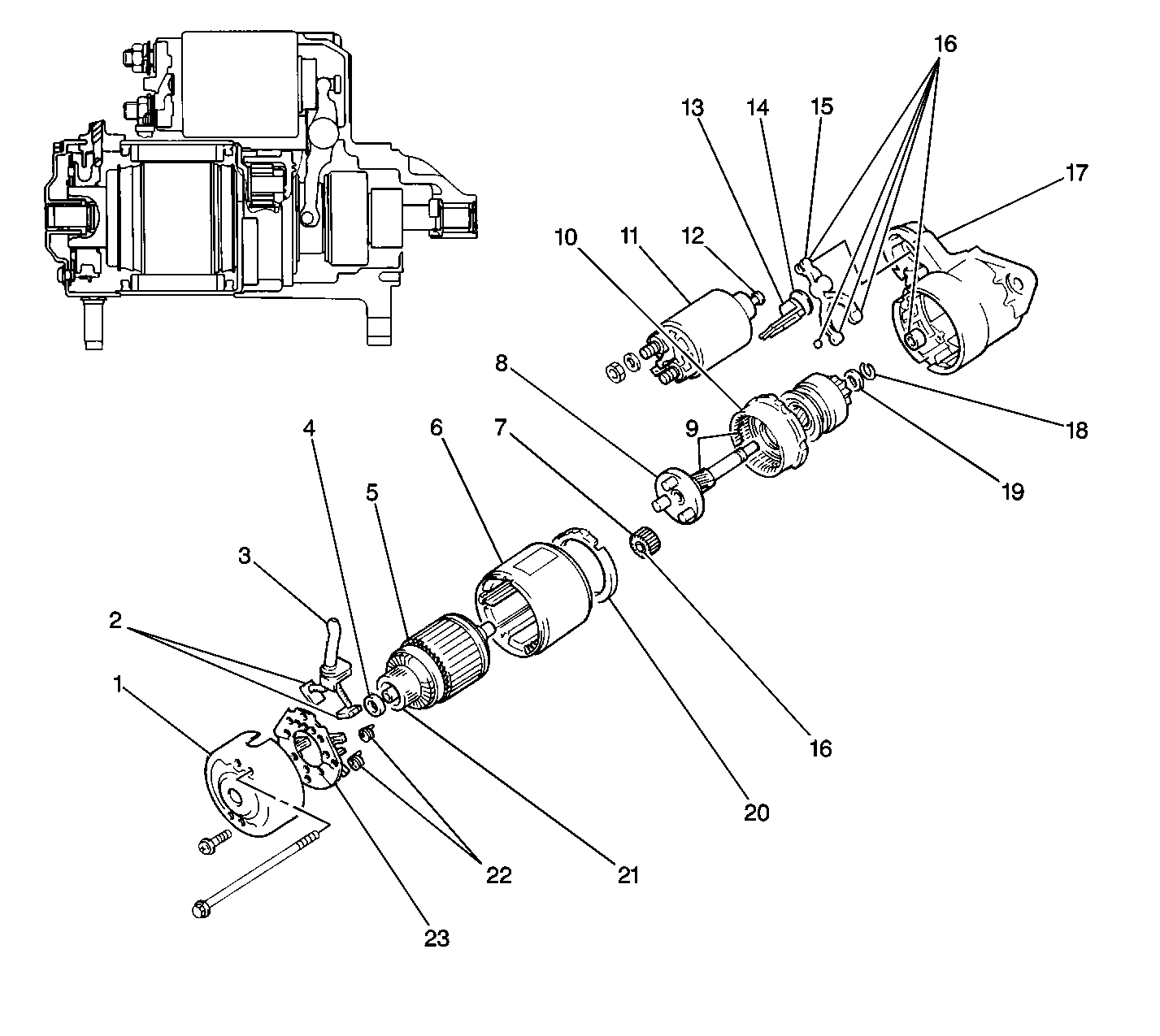| Figure 1: |
Starting Circuit

|
| Figure 2: |
Starter Motor

|
The cranking circuit consists
of the battery , the starter motor , the ignition switch and related parts.
All of these components are connected electrically.
The starter solenoid windings are energized when the ignition switch
is turned to the start position and the clutch pedal position (CPP) switch
(manual transmission) or the transaxle range switch (automatic transmission)
is closed. (In manual transmission equipped vehicles, the clutch pedal
must be fully depressed to activate the clutch pedal position switch.)
The resulting plunger and shift lever movement causes the drive pinion
to engage the engine flywheel ring gear and the starter solenoid contacts
to close.
With the contacts closed, the starter solenoid provides a closed circuit
between the positive (+) battery terminal and the starter motor. The circuit
is complete and cranking occurs as soon as the starter solenoid contacts
are closed (the starter motor is permanently grounded to the engine block).
When the engine starts, the clutch and drive assembly is designed to
overrun and protect the armature from excessive speed until the ignition
switch is released from the start position. After the ignition switch
is released from the start position, a return spring in the solenoid
assembly forces the starter solenoid contacts open, breaking the circuit
between the battery and the starter motor, and disengaging the clutch
and drive assembly. The ignition switch should be released immediately
upon engine start-up to prevent prolonged overrun.



